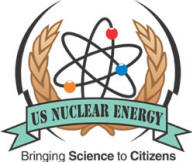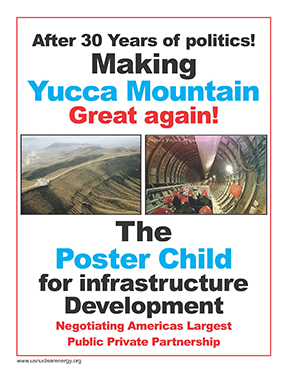What the Hell are SMRs?
"The gap" is a fictional metaphor, the one that exists between science, facts and myths. Science and facts both tell us that nuclear energy is our future. Myths are what keep the cycle of fear going. Myths paint us a picture of a dystopian future if we embrace the nuclear ideals. What thoughts pop into your mind if you think of the word "nuclear"? Are they: war, meltdowns, radiation and terrorism? Unsurprisingly when polling people, these are the top concerns that the public has. It's no surprise we would be afraid of meltdowns when we have had three major ones thus far. Three Mile Island, Chernobyl and Fukushima.
Why though, do we think of terrorism and war? On July 16th 1945 we were introduced to the thought of nuclear war as the first nuclear bomb was tested in New Mexico. Three weeks later, on August 6th we dropped an atomic bomb on Hiroshima, Japan. Nuclear has since been a word to fear. Countries after that started to make their own bombs, with the Soviet Union being the first. It would make sense that nuclear terrorism would come in second as a concern. In the modern day today, nuclear war is still a possibility. This is why countries develop treaties to protect each other and to stop all-out war from becoming a reality.
Climate change is the other big concern. Radiation leaking into the atmosphere, the air that we breathe and the soil we grow our plants in. This is another false belief. Fact: If you lived within 50 miles of a nuclear power plant, you would receive a radiation dose of 0.01 millirem per year. In the United States per year, we get an exposure of 620 millirem a year simply from all the background radiation that already exists. Radiation is the unseen force that exists all around us. Anything from the minerals in the ground to the cosmic rays that reach our planet, we can't see it, but it's there.
We need to end the stigmas and sterotypes of the past. We need to understand that we can't turn magically superhuman if we were dropped into a vat of toxic waste like some of the comics of today's world show us. In truth, that would kill you. We aren't living in Springfield with Mr. Burns controlling our world and Homer throwing around nuclear fuel rods. Radiation doesn't glow green either. It is not visible to the human eye. Nuclear energy exists to provide electricty to you, your family and the city which it stands in. Nuclear energy makes up 11% of the world's energy, with 55% of that energy being provided to America in carbon free emissions.
Most nuclear reactors these days have a lifespan of 30-40 years. New technology has to be built to meet the demands of the ever growing population of people. These come to us in the form of SMRs (Small Modular Reactors). SMRs have been around for more than 50 years. They are becoming available now as we try and figure out how to give energy to people on and off the grid. They are sustainable, can use recycled spent fuel and they cut down on waste. They come from the factory already assembled and fueled. The fuel inside can power them for quite a few years. SMRs can be built almost entirely underground making them resiliant to weather. SMRs also cannot melt down. They are built to autonomously shut down in the event of unforseen circumstances.
SMRs are built to be economical and also operate entirely off of a power grid. They can supply power to critical places like hospitals, data centers and even our military. They also can provide heat and other needs to rural coal mining places. SMRs are extremely versatile and cut down on size and carbon footprint.
 |
Amanda Foster |




